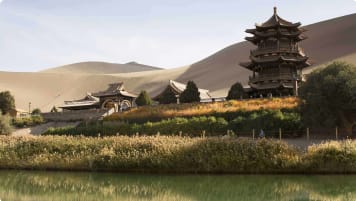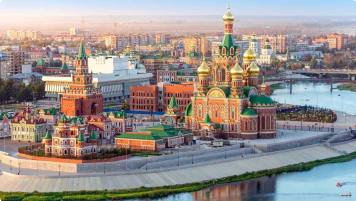Trans-Siberian Landscapes and Wildlife
Trans-Siberian Landscapes and Wildlife Even in a fast-paced world where travelling long distances means hopping on a plane and journeying through the air for a few hours, the Trans-Siberian Railway continues to have a magnetic…
14 Nov 18 · 9 mins read

Trans-Siberian Landscapes and Wildlife
Even in a fast-paced world where travelling long distances means hopping on a plane and journeying through the air for a few hours, the Trans-Siberian Railway continues to have a magnetic pull. The sheer scale of the days-long train journey, crossing seven time zones from Moscow to Vladivostok at a leisurely speed of at most 90 km/h (or 56 mph), attracts tourists from all over the world. Other than the novelty of an adventure by train, another point of attraction for tourists are the landscapes and wildlife that can be discovered on the Trans-Siberian journey. The landscapes change as the train moves across Siberia, and Russia is home to many species of wildlife that cannot be found anywhere else.
In this article, we’ll look at the various landscapes and wildlife we can find while traversing Russia on the greatest train journey in the world.
Taiga
“Taiga” is a forest of the cold, subarctic region, also the collective term used for the northern forests of Russia, especially Siberia. The word means “land of the little sticks” in Russian. The world’s largest taiga is in Russia, covering 5,800 kilometres (3,600 miles), which means this is the landscape you will most likely see from the windows of the Trans-Siberian trains.
This Russian taiga was completely covered in glaciers during the Ice Age, and up to now the soil beneath its trees contains permafrost, a layer of permanently frozen soil. What you’ll find in the taiga are a number of conifer species, trees that survive in the highest latitudes on Earth, able to adapt to the region’s long, cold winters and short summers.
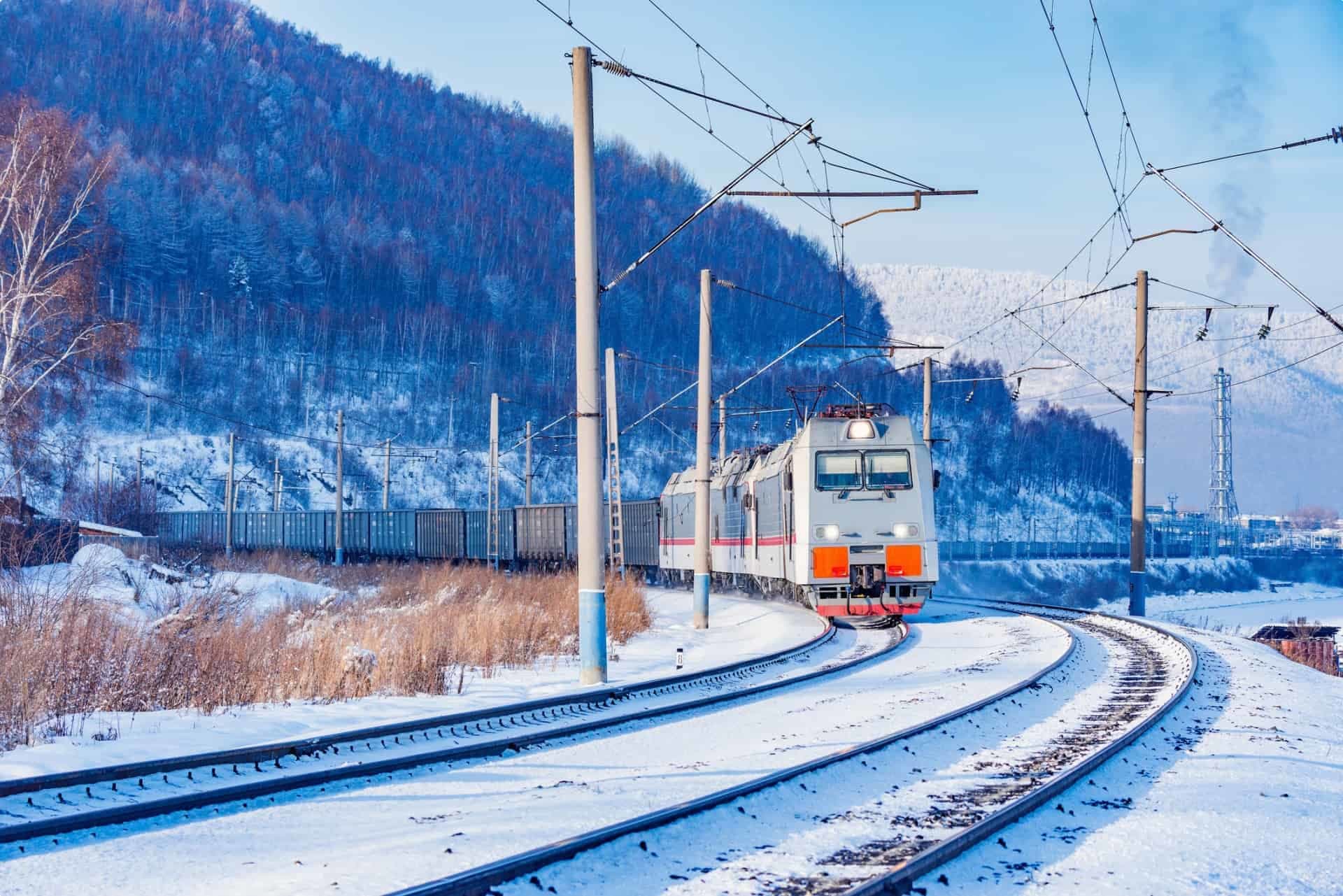
These conifer species include Siberian pine (Pinus sibirinus), spruce (Picea), and fir (Abies). Coniferous trees have needles instead of broad leaves, and their seeds grow inside woody cones. The needles contain very little sap, which prevents them from freezing. Conifers never lose their needles like the deciduous trees of temperate forests, and for this reason they are also called “evergreens”.
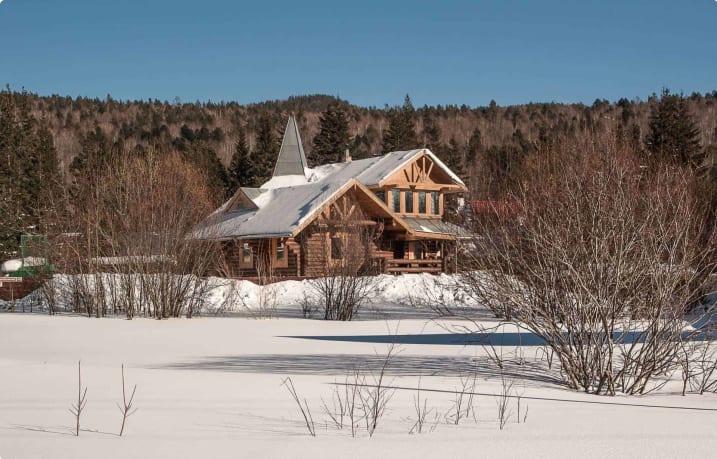
“True” taiga is a coniferous forest, but some areas of the taiga also have deciduous trees (“deciduous” comes from the Latin decidere,” fall down or off”) such as birch (Betula), and poplar (Populus).
The subarctic forest floor is covered with moss, lichen, and mushroom instead of shrubs and flowers, as these are the species that can survive in the cold with little water or sunlight.
The taiga is important to the planet as it serves as a carbon sink, or a natural system that removes carbon dioxide from the atmosphere, helping control the world’s temperature.
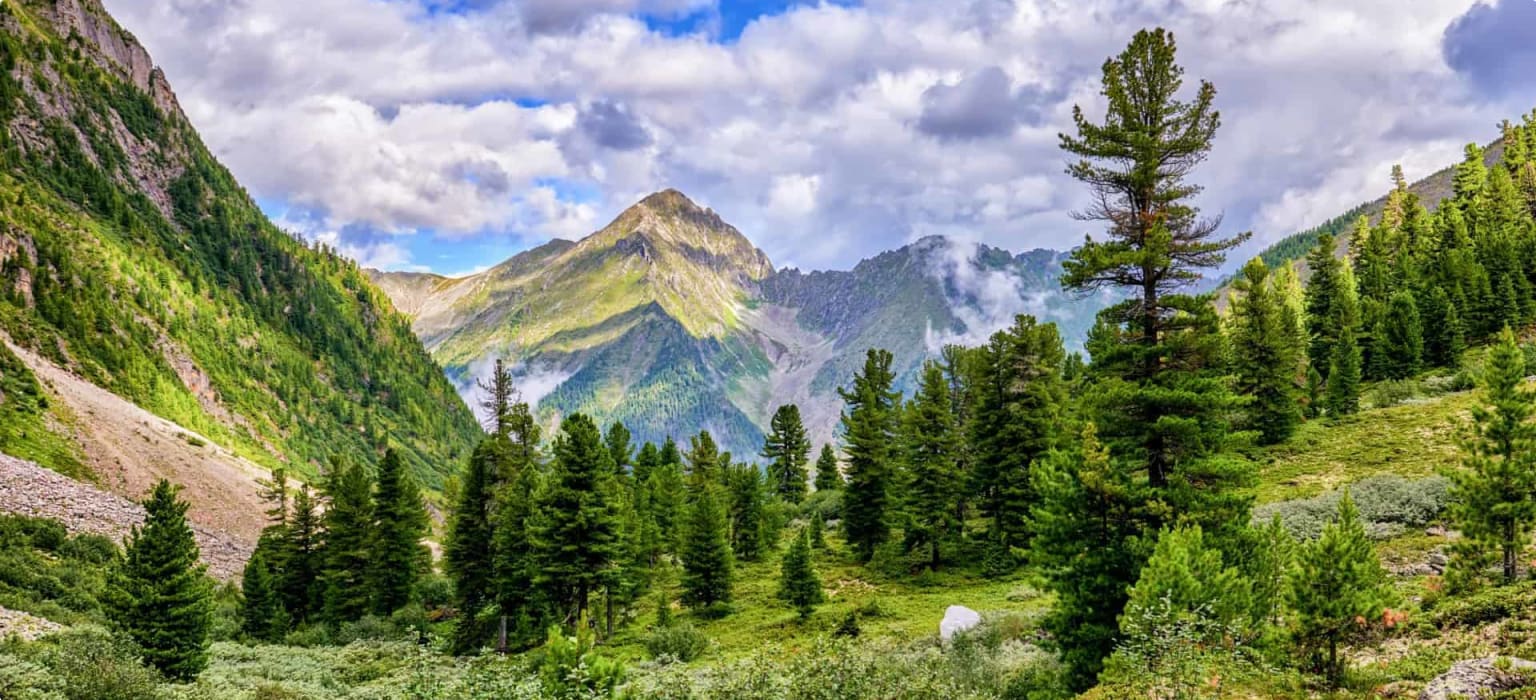
Wildlife of the Taiga
The taiga is filled with wildlife. Common in the area are the red squirrel (Scurius vulgaris), Siberian chipmunk (Eutamias sibiricus), arctic hare (Lepus timidus), lynx (Felis lynx), red fox (Vulpes vulpes), Siberian weasel (Mustela sibirica), ermine (Mustela erminea), wolverine (Gulo gulo), and sable (Martes zibellinus).
Historically, the small, carnivorous sable was hunted for its dark brown or black fur. Sable fur has been a highly valued item since the early Middle Ages and was treasured by the Russian nobility. It formed the bulk of the tribute paid to the tsarist regime after the Russian invasion of Siberia. Sable fur, which comes in a range of colours, is coveted for its quality to retain smoothness even when stroked against the grain. It remains a symbol of luxury–a sable coat made from hunted sable fur can go for upwards of US$100,000/AU$138,000. Karl Lagerfeld’s sable coat for Fendi in 2015 was priced at 1 million euros (or US$1.1 million/AU$1.5 million).
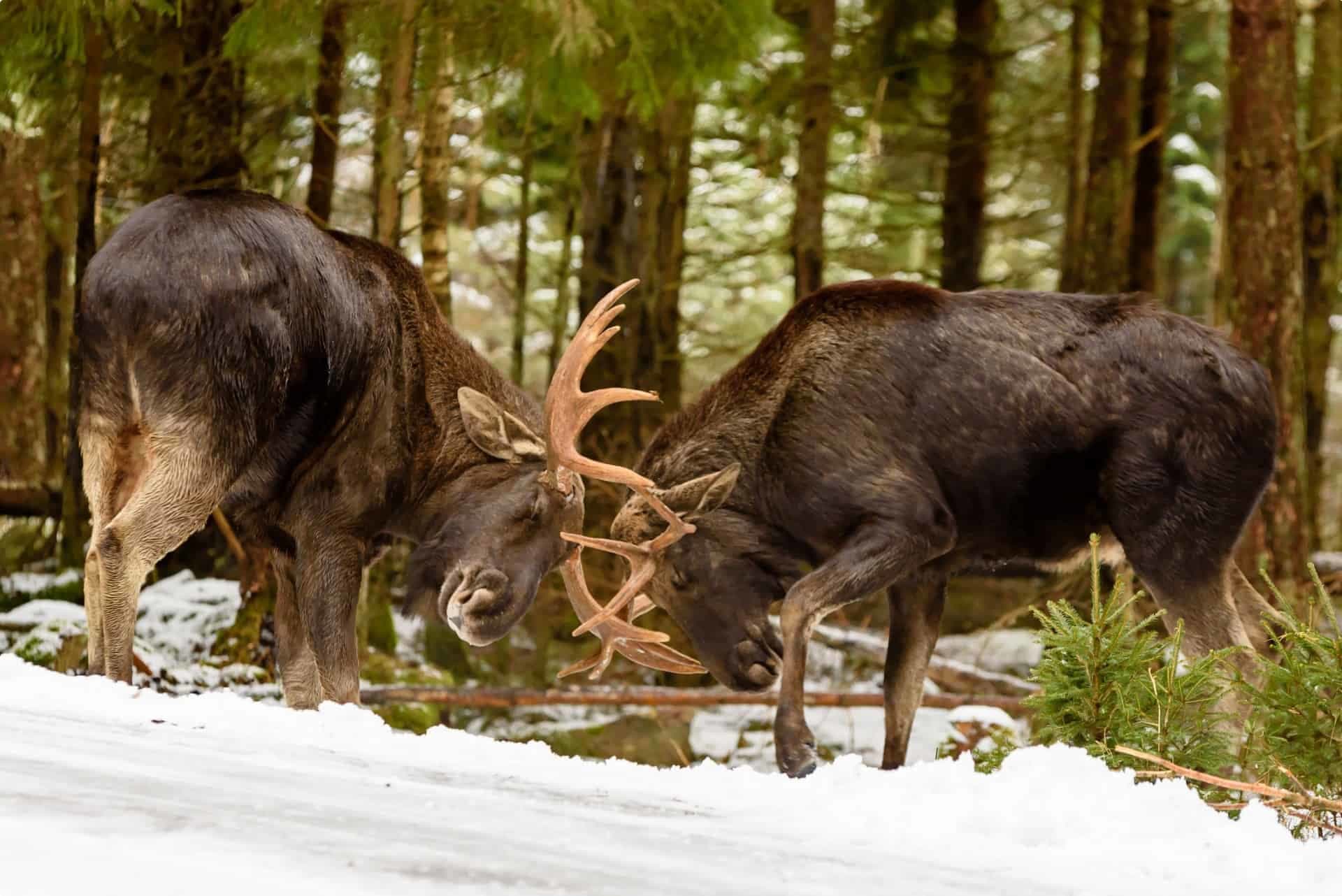
The larger mammals seen in the taiga are the elk (Alces alces) and brown bear (Ursus arctos). Common taiga birds are the hazel grouse (Getrastes bonasia), capercaillie (Tetrao urogallus and T. parvirostris), the great grey owl (Strix nebulosa), hawk owl (Surnia ulula) and boreal owl (Aegolius funereus), the black woodpecker (Dryocopus martius), northern three-toed woodpecker (Picoides tridactylus), Siberian jay (Perisoreus infaustus) and the nutcracker (Nucifraga caryocatactes).
Further north you’ll have the black scoter (Melanitta nigra), Baikal teal (Anas formosa), and lesser white-fronted goose (Anser fabalis).
Lake Baikal
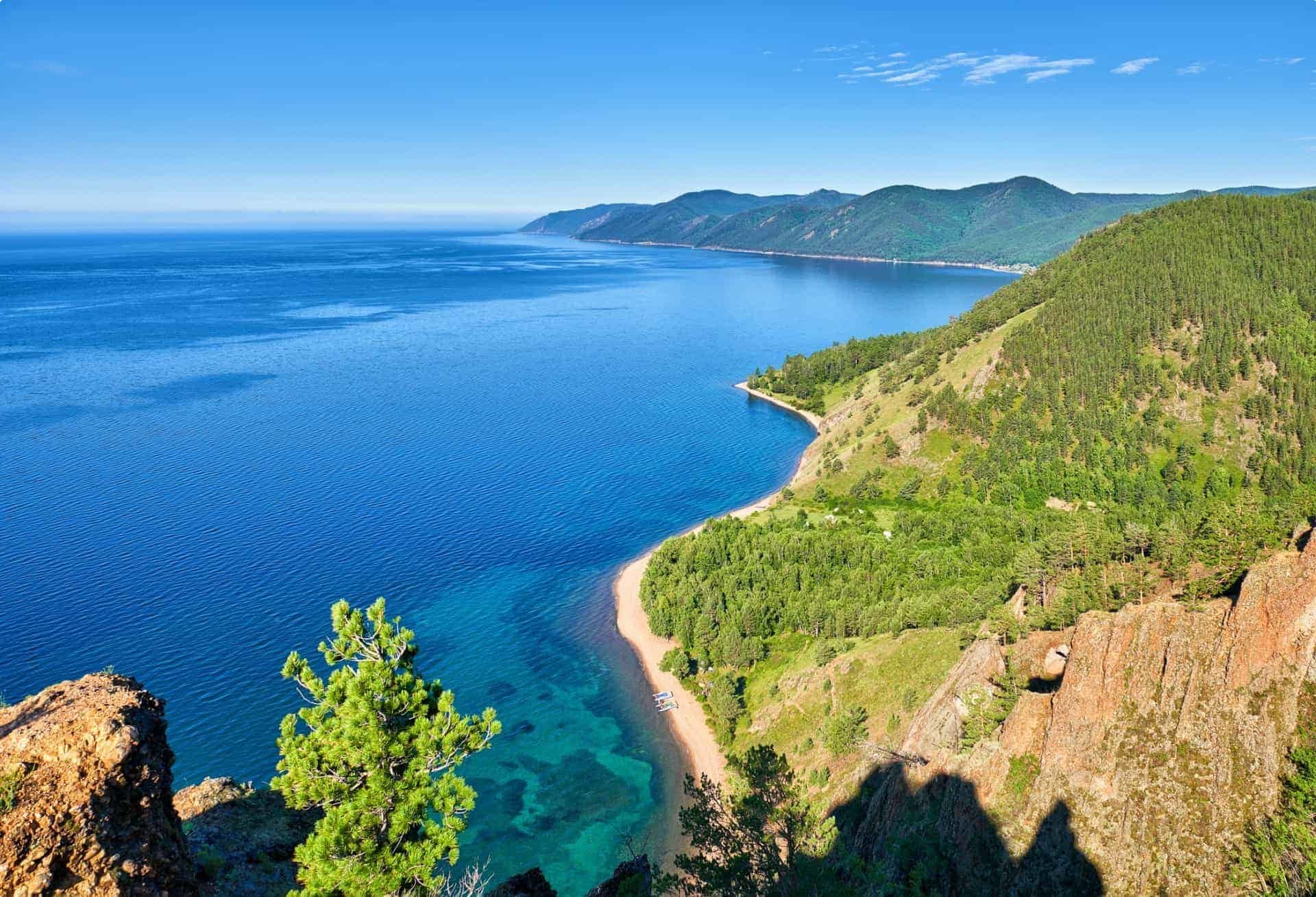
Lake Baikal is the largest, deepest, and oldest freshwater lake in the world. It contains nearly a quarter of the world’s fresh surface water, more water than all of the Great Lakes of North America combined. It has a depth of 1.6 kilometres (around a mile) and is considered the world’s oldest lake at 25 to 30 million years old. This is a popular stop for tourists riding the Trans-Siberian Railway. In summer, they can swim in the lake’s clear waters (so clear that from the surface you can see to 40 metres or 130 feet), or go ice fishing in winter on the lake’s frozen surface. They can also take the Circumbaikal Railway, which offers a scenic and leisurely ride around the lake.
Lake Baikal is a zoologist’s and botanist’s dream–it is home to more than 1,700 species of plants and animals, 80% of them endemic to the area, which means these species are found nowhere else. Baikal’s commercial fish is the endemic omul (Coregonus migratorius), a white fish belonging to the salmon family. It is often sold smoked, a local delicacy.
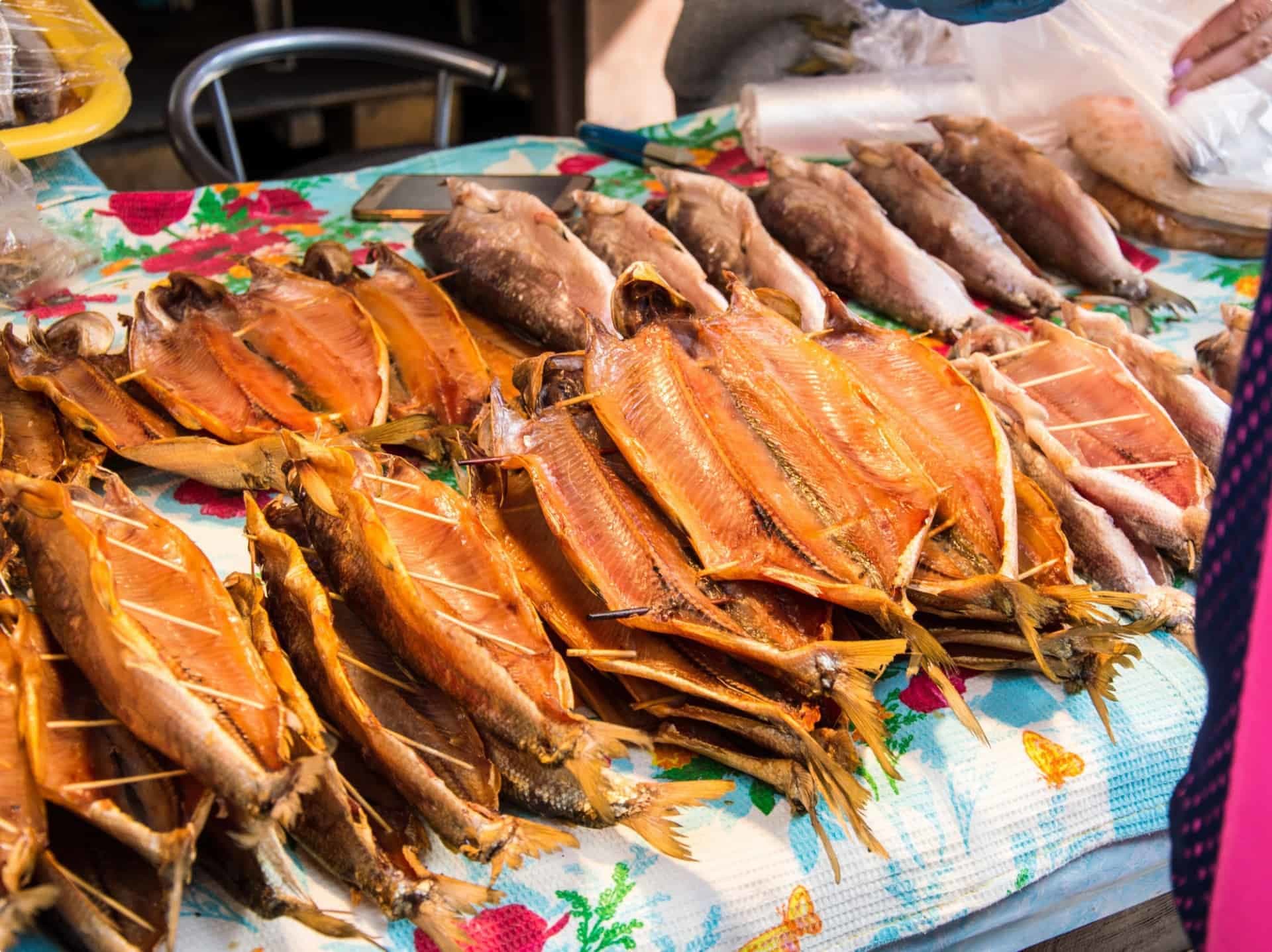
Another fish endemic to Baikal is the oilfish golomyanka (Comephorus) which have translucent bodies with no scales and can survive the great pressure in the depths of Lake Baikal. They are viviparous (which means they give birth to live young instead of eggs) and have high fat content.
A native mammal species is the world’s only freshwater seal, the Baikal seal or nerpa (Phoca sibirica), which feeds on the golomyanka. The Baikal seal has large eyes that helps them hunt the depths of the lake even at night, and strong claws to cut through winter ice.

Russia also has six of the world’s 20 longest rivers. The Amur (4,416 km), Lena (4,400), Yenisey (4,090 km), Irtysh (4,245 km), and Ob (3,680 km) flow across Siberia and empty into the Arctic Ocean.
Stolby Nature Sanctuary
Another popular stop on the Trans-Siberian Railway is the Stolby Nature Sanctuary 10 kilometres south of the city of Krasnoyarsk. Founded in 1925 by locals, Stolby (“pillars”) derives its name from the unusual shapes of its rock formations mostly of sedimentary and volcanic origin, dating back to the Cambrian Period, making the rocks more than 600 million years old.
Some of these rock formations have been given names based on their appearance: Ded (“Grandfather”), Perja (“Plumage”), and Lvinnyj vorota (“Lions Gate”), among others.
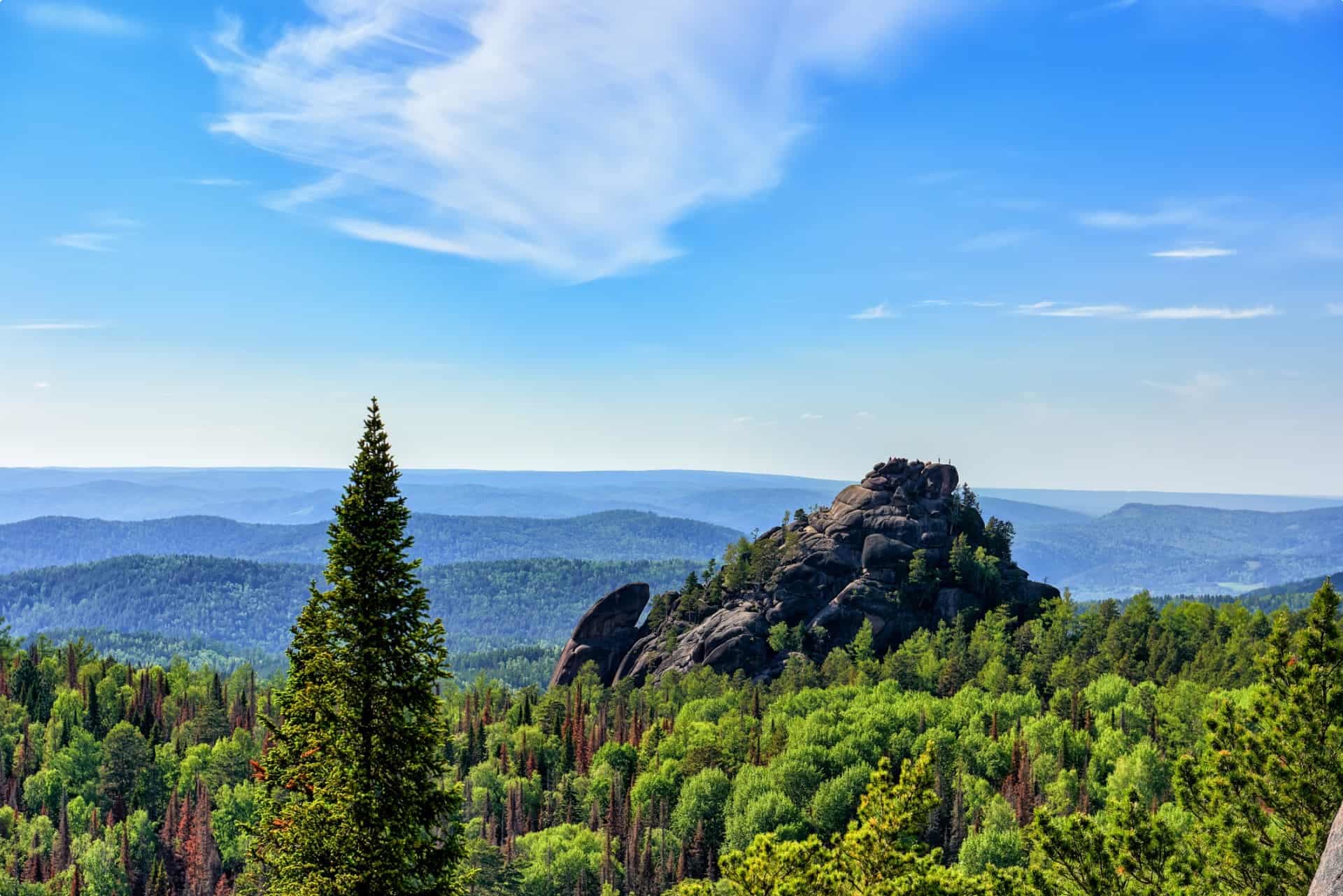
The reserve’s natural borders are the right tributaries of the Yenisey: the Bazaikha River in the northeast and the Mana River and Bolshaia Slizneva (“Big Slime”) River in the south and southwest. The reserve borders on the city of Krasnoyarsk in the northeast. A small portion of the huge nature reserve (“Central Stolby”, around 4% of the reserve’s total land area) is open to the public, while the rest (“Wild Stolby”) is not recommended to tourists.
The nature reserve is surrounded by taiga, so the flora is predominantly made of coniferous trees such as pine and silver fir. Taiga species such as sable live in the forests.
Primorsky Krai/Ussuriland
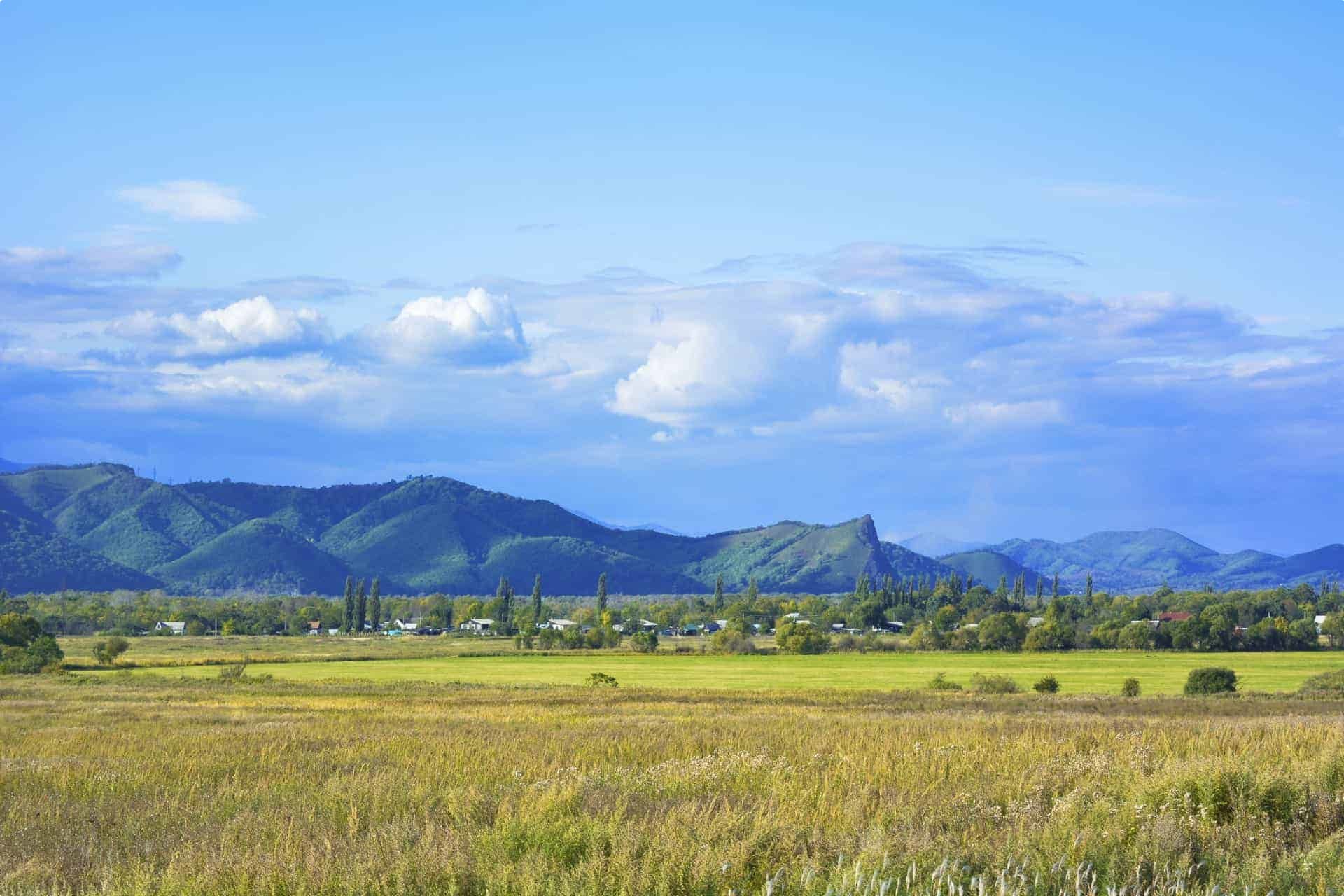
The central region of the Primorsky Krai in the far eastern end of the Trans-Siberian Railway, bounded by the Ussuri river and dominated by the Sikhote-Alin Mountains, is known as Ussuriland. The Sikhote-Alin Range is a 1,200-km (750-mile) mountain complex fronting the Sea of Japan. The region is where the taiga meets the tropics, covered by a monsoon forest with a lush undergrowth you’d associate more with Southeast Asia than Russia. The highest summits of the mountain range are bare but most are densely forested, with conifers at the top and mixed deciduous forests lower down.
The fauna includes species of the taiga alongside the tree-climbing and herbivorous Asian black bears (Ursus thibetanus), the Amur leopard (Panthera pardus orientalis), and the Amur or Siberian tiger (Panthera tigris altaica).
The Siberian tiger (also called the Amur tiger) is the largest tiger in the world and can measure up to 3.5 metres (or 10 feet) in length and weigh as much as 300 kilograms (660 lbs). There are fewer than 600 Siberian tigers now, a sharp population decline caused by heavy poaching. The tigers were nearly hunted to extinction in the 1940s until Russia became the first country in the world to grant full protection to the Siberian tiger.
The Amur leopard is even more critically in danger, numbering fewer than 90. It is a subspecies of leopard related to the leopards of northern China and Korea that has adapted to the climate of the Russian Far East. The Amur leopard differs from other leopard subspecies by its thick fur, which helps it survive the winter.
Russia and western conservation organisations established the Amur Leopard and Tiger Alliance (ALTA) to conserve the Amur leopard and tiger. In 2018, ALTA merged with another wildlife funding program, 21st Century Tiger, and formed the WildCats Conservation Alliance, an initiative of the Zoological Society of London (ZSL) and Dreamworld Wildlife Foundation (DWF) based in London’s Regent’s Park.
Steppe
Crossing from Russia to Mongolia on the Trans-Mongolian (a line branching out of the main Trans-Siberian route) gives travellers a view of the Eurasian steppe, a belt of dry, grassy land that extends from Hungary in the west through Ukraine and Central Asia to Manchuria in the east. This belt of grassland is the largest temperate grassland in the world.
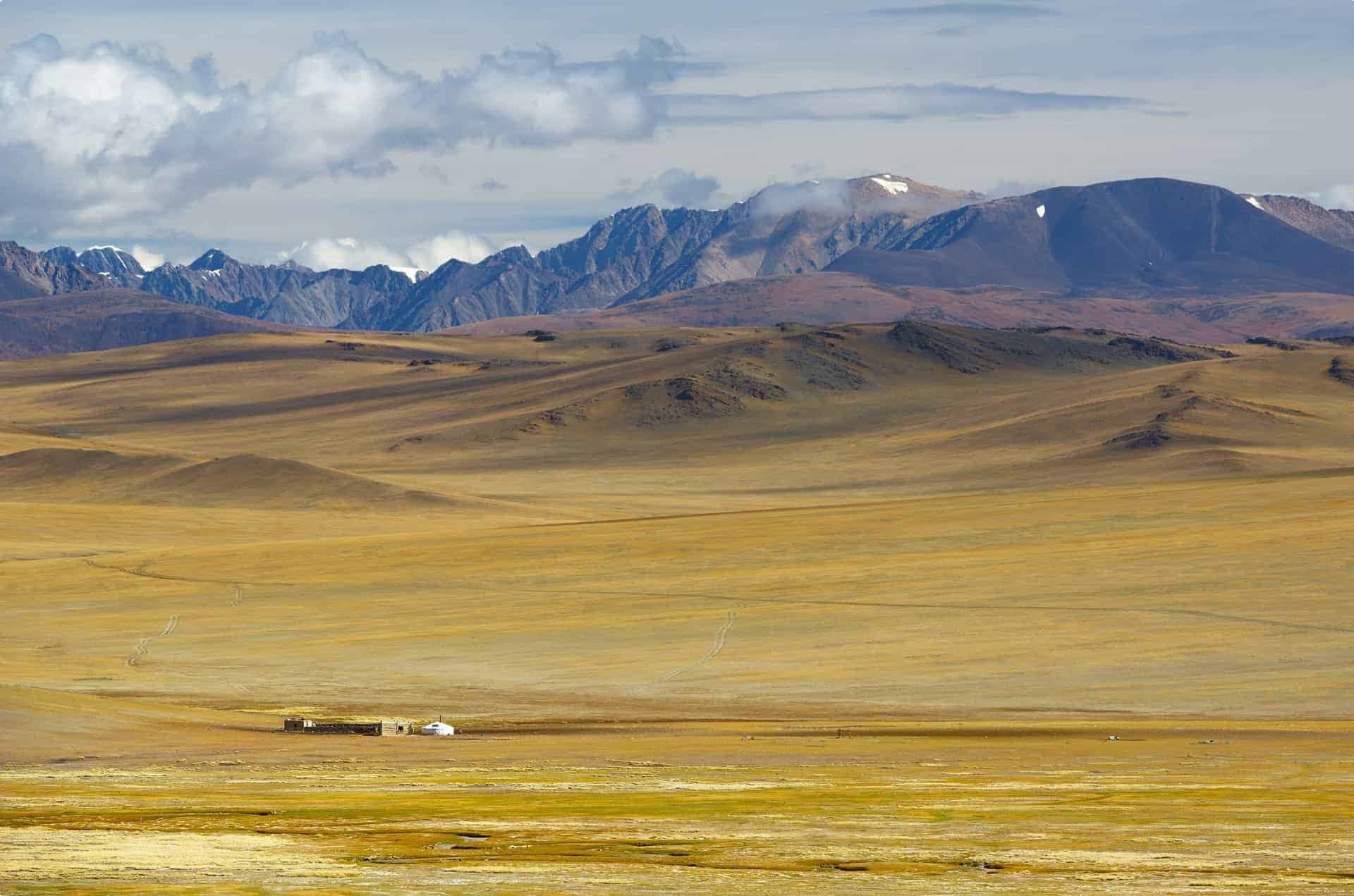
Steppes are semi-arid, receiving 25 to 50 centimetres (10-20 inches) of rain each year, enough rain for short grasses (often no taller than half a meter or 20 inches) to grow, but not enough to support tall grasses or trees.
Though the Eurasian steppe is divided by mountain ranges, it did not stop Genghis Khan from conquering territory, and certainly did not stop trade caravans from selling their goods. The most famous trade route on the Eurasian steppe is the Silk Road, established around year 200, derived from the lucrative trade of silk (among others) linking China, Central Asia, and Europe.
Threats to the Ecosystem
These natural landscapes are threatened by human activity and climate change. Heavy poaching have led to the dwindling of Siberian tiger and Amur leopard populations, and even the omul are starting to disappear from Lake Baikal. Human pollution has also led to an explosion of Spirogyra algae unnatural to the lake. In October 2018, the Russian government introduced a ban on commercial omul fishing to allow the fish population to recover.
“Clearcutting”, the most popular type of logging in the taiga that involves cutting down all the trees in an area to answer the demand for timber, is also threatening the region. The rising world temperature brought by climate change leads to the thawing of permafrost, turning most of the taiga to muskegs, or shallow bogs, where trees cannot take root. All of these lead to loss of habitat for native species.
Travelling on the Trans-Siberian Railway as well as other parts of the globe calls for responsible tourism, which also involves carefully choosing tour operators whose practices are guided by ethical and environmental considerations.
Travelling with Odyssey
Odyssey has always maintained a commitment to small-group travel, limiting the number of participants per tour. Small groups makes for a fantastic and intimate experience for travellers, but it also means groups are nimble, adaptable, and make minimal impact on the ground. Read more in our article on responsible tourism.
Our Helsinki to Irkutsk tour on the Trans-Siberian Railway runs for 21 days with at most 12 participants, and spends multiple nights in Helsinki, St Petersburg, Moscow, Yekaterinburg, Krasnoyarsk, and Irkutsk, with stops at Stolby Nature Sanctuary and Lake Baikal.
The 30-day Trans-Mongolia and Russia tour takes you on the Trans-Siberian and the Trans-Mongolian Railway lines. The tour begins in Ulaanbaatar, the capital of Mongolia, and concludes with a cruise on the waterways between Moscow and St Petersburg.
Just click through the links to see the full itinerary and sign up!
If you want to learn more about travelling on the Trans-Siberian Railway, read this overview, which includes tips on booking your ticket and preparing for the long train ride.
Sources for this article are linked throughout, but another good resource is Lonely Planet Russia by Simon Richmond et al.
For a different pace and cultural experience, you may want to explore:
- Japan History by Rail tour which journeys through Japan on the shinkansen (high-speed train)
- French History by Rail tour which goes through Paris and the other cities of France; we have a 21-day tour and a shorter 11-day tour
About Odyssey Traveller

Odyssey Traveller is committed to charitable activities that support the environment and cultural development of Australian and New Zealand communities. We specialise in educational small group tours for seniors, typically groups between six to 15 people. Odyssey has been offering this style of adventure and educational programs since 1983.
We are also pleased to announce that since 2012, Odyssey has been awarding $10,000 Equity & Merit Cash Scholarships each year. We award scholarships on the basis of academic performance and demonstrated financial need. We award at least one scholarship per year. We’re supported through our educational travel programs, and your participation helps Odyssey achieve its goals.
For more information on Odyssey Traveller and our educational small group tours, visit our website. Alternatively, please call or send an email. We’d love to hear from you!
Related Tours
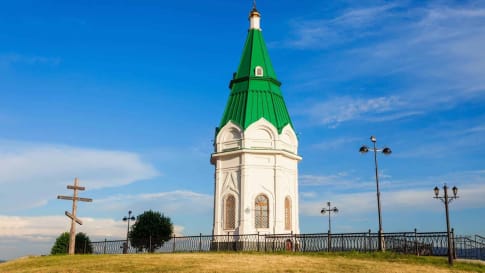
days
Oct, MayHelsinki to Irkutsk on the Trans-Siberian Railway
Visiting Finland, Russia
Escorted tour on the Trans-Siberian railway network from West to East starting in Helsinki and finishing in Irkutsk after 21 days. This is small group travel with like minded people and itineraries that maximise the travel experience of the 6 key destinations explored en-route. Our small group journeys are for mature couples and solo travellers.

days
Apr, AugIrkutsk to Helsinki on the Trans-Siberian Railway
Visiting Finland, Russia
Escorted tour on the Trans-Siberian railway network from East to West starting in Irkutsk and finishing in Helsinki after 21 days. This is small group travel with like minded people and itineraries that maximise the travel experience of the 6 key destinations explored en-route. Our small group journeys are for mature couples and solo travellers.
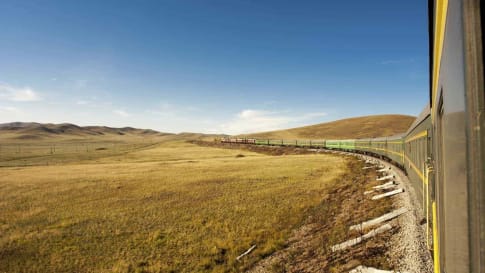
days
JulJourney through Mongolia and Russia small group tour
Visiting Mongolia, Russia
This escorted small group tour traverses this expanse, from Ulaanbaatar to St Petersburg; from the Mongolian Steppes to Siberian taiga and tundra; over the Ural Mountains that divide Asia and Europe to the waterways of Golden Ring. Our program for couples and solo travellers uses two of the great rail journeys of the world; the Trans Mongolian Express and the Trans Siberian Express.
From A$17,850 AUD
View Tour